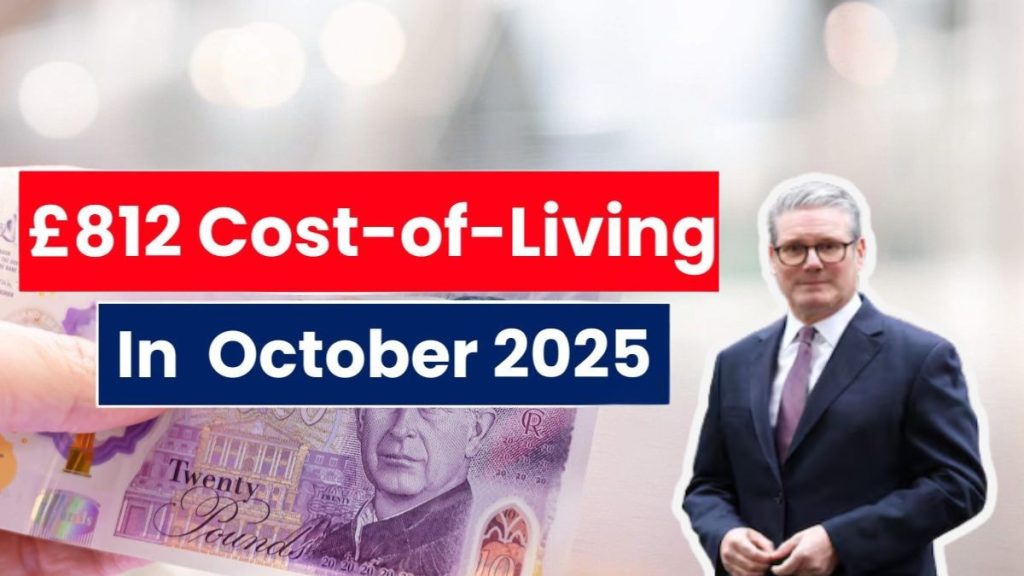Older pensioners across the UK are set to receive a significant income boost next year, as the Department for Work and Pensions (DWP) confirms that the state pension will rise by 4.7% from April 2026.
The increase, driven by the government’s triple lock system, means that the full new state pension will climb to £12,535 a year, an annual uplift of £562 for those receiving the maximum entitlement.
While this rise offers welcome relief amid persistent inflation and rising household costs, pension experts warn that many retirees could soon face income tax for the first time, as frozen tax thresholds fail to keep pace with growing pension payments.
What You Need to Know About the April 2026 Pension Increase
The 2026/27 rise is one of the most notable pension updates in years. Under the triple lock guarantee, the state pension increases each April in line with whichever of the following is highest:
- The rate of inflation,
- Average wage growth, or
- A minimum of 2.5%.
For the upcoming financial year, wage growth of 4.7% has outpaced inflation, setting the benchmark for the rise.
As a result, the weekly state pension for those on the full rate will reach approximately £241, equating to £12,535 per year. This uplift aims to ensure pensioners’ incomes better reflect the rising cost of living.
Quick Overview: State Pension Changes for 2026/27
| Key Area | Details for 2026/27 |
|---|---|
| Annual Increase | 4.7% under the triple lock |
| New Annual Pension | £12,535 per year |
| Weekly Payment | Around £241 per week |
| Reason for Increase | Wage growth of 4.7% |
| Implementation Date | April 2026 |
| Triple Lock Rule | Higher of inflation, wage growth, or 2.5% |
| Tax Impact | More retirees may fall into income tax |
| Frozen Tax Allowance | Reduces real benefit (“fiscal drag”) |
| Triple Lock Future | Guaranteed only until end of current Parliament |
The Triple Lock System Explained
Introduced in 2010, the triple lock was designed to protect pensioners’ incomes and ensure their spending power keeps pace with economic conditions. Each year, the state pension increases by whichever is highest among:
- The Consumer Prices Index (CPI) measure of inflation,
- Average UK wage growth, or
- A guaranteed 2.5% minimum.
For 2026, wage growth proved the highest measure, resulting in the 4.7% uplift.
The system has been a cornerstone of UK retirement policy, praised for reducing pensioner poverty but criticised for being increasingly costly to maintain — particularly during times of economic volatility.
The £562 Boost: What It Means for Pensioners
For retirees living on fixed incomes, this £562 annual increase could make a tangible difference in covering essential expenses such as food, rent, or energy bills.
The DWP estimates that more than 12 million pensioners will benefit from the rise. Those receiving the full new state pension will see their weekly payments increase from around £230 to £241, while those on the basic state pension (pre-2016 system) will also see a proportionate increase.
Pension experts have welcomed the move as a “meaningful rise” that will help older citizens manage the lingering effects of inflation.
However, as several analysts have warned, “the uplift may come with hidden costs.”
The Tax Trap: How Frozen Thresholds Affect Pensioners
While the increase itself is positive, frozen tax thresholds mean many pensioners could now pay tax for the first time on their state pension income.
The personal allowance — the amount you can earn before paying income tax — remains frozen at £12,570 until at least 2028. With the full new state pension now reaching £12,535, retirees are only £35 below the tax threshold.
That narrow gap means:
- Any additional income, such as from private or workplace pensions, savings interest, or part-time work, will push pensioners over the taxable limit.
- Even those relying solely on the state pension could soon find themselves automatically drawn into the tax system if allowances remain unchanged.
Experts refer to this as “fiscal drag” — a situation where rising income pushes individuals into higher tax brackets even when their spending power doesn’t increase in real terms.
Expert Warnings on the 2026 Rise
According to analysts at Spencer Churchill Claims Advice, the rise offers both “relief and risk.”
A spokesperson said:
“The 4.7% increase gives pensioners a crucial cushion against inflation, but it also brings many dangerously close to the tax threshold. With personal allowances frozen, thousands may start paying income tax for the first time in their lives.”
Financial advisors are urging retirees to review their total income ahead of April 2026 and plan accordingly to avoid unexpected tax bills.
How the Frozen Tax Allowance Erodes Real Gains
The government’s decision to freeze personal tax thresholds until 2028 means any rise in income — whether from wages or pensions — automatically results in higher tax receipts.
This policy effectively offsets part of the benefit pensioners gain from the triple lock.
For example:
- A pensioner with an additional £1,000 in private pension income could pay 20% tax on £965 of their total income (anything above £12,570).
- Those with multiple small pensions or savings may need to register with HMRC to ensure they pay the correct tax.
In short, while pensioners will see more money coming in, they might not keep as much of it as expected once taxes are accounted for.
The Future of the Triple Lock
The government has guaranteed the triple lock until the end of the current Parliament, expected in 2028. However, beyond that, its future remains uncertain.
Critics argue that the system is becoming financially unsustainable, as it forces the Treasury to commit billions more each year to pension payments.
Still, for now, the triple lock remains a political and social promise — one that has widespread public support, especially among older voters who rely on it as a key source of financial security.
Preparing for the April 2026 Changes
To make the most of the upcoming increase, pensioners should take a few steps to review and plan their finances in advance:
- Check your pension forecast: Visit GOV.UK to confirm your entitlement and expected payment level.
- Review all sources of income: Add up your state, workplace, and private pensions to understand your total taxable income.
- Plan for possible tax deductions: If your total income exceeds £12,570, expect a small portion to be taxed.
- Seek professional advice: A financial advisor or tax specialist can help minimise unnecessary liabilities.
- Consider deferring payments: If you don’t immediately need the income, deferring your state pension may slightly increase future payments.
Why This Matters for Pensioners
The April 2026 rise represents a significant step forward for pensioner incomes, reaffirming the government’s commitment to maintaining the triple lock despite fiscal pressure.
For many retirees, the increase will provide genuine relief after years of financial strain caused by inflation and high living costs.
However, with tax thresholds frozen and inflation still unpredictable, the real-world benefit may feel smaller than the headline figure suggests.
Balancing financial security with tax planning will be essential for pensioners looking to make the most of this welcome — but complex — income boost.
Frequently Asked Questions (FAQs)
1. How much will the state pension increase by in April 2026?
The full new state pension will rise by 4.7%, increasing from around £11,973 to £12,535 per year — a gain of about £562.
2. Why is the pension increasing?
The rise is based on the triple lock system, which uses the highest of inflation, wage growth, or 2.5%. Wage growth of 4.7% triggered the 2026 increase.
3. When will the increase take effect?
The new payment rates will take effect from April 2026, at the start of the 2026/27 financial year.
4. Will I have to pay tax on my pension?
Possibly. Because the personal tax allowance is frozen at £12,570, some pensioners will now fall into the income tax threshold.
5. Will the triple lock continue after 2026?
The government has pledged to maintain it until the end of the current Parliament, but its future beyond that remains uncertain.



















